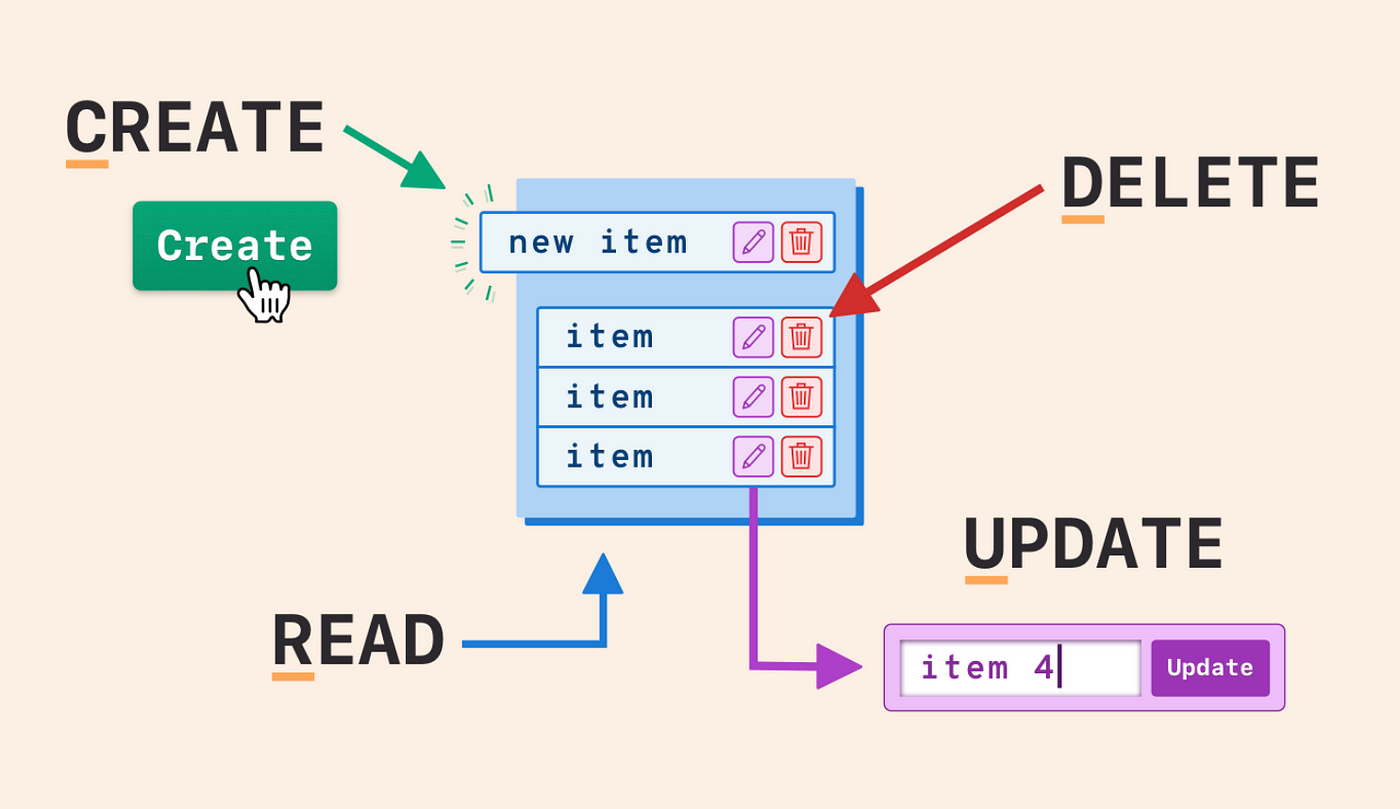CRUD

In the realm of computer science and database management, CRUD operations serve as the fundamental building blocks upon which the entire infrastructure is erected. CRUD, an acronym for Create, Read, Update, and Delete, encapsulates the essential functionalities required to manage persistent data in various applications and systems. From simple text files to complex relational databases, CRUD operations form the backbone, facilitating the manipulation and maintenance of data. In this article, we delve into the depths of CRUD, exploring its significance, implementation, and practical applications in modern computing.
Table of Contents
ToggleUnderstanding CRUD Operations:
- Create (C): The ‘Create’ operation entails the addition of new data entities into the database. Whether it’s a new user registering on a website, a product being added to an inventory system, or a post published on a social media platform, the ‘Create’ operation initiates the process of inserting fresh data records into the system. It involves defining the structure and attributes of the data entity and populating it with relevant information.
- Read (R): The ‘Read’ operation involves retrieving and accessing data from the database. It allows users and applications to fetch specific data records or entire datasets based on predefined criteria. Whether it’s displaying user profiles, fetching product details, or generating reports, the ‘Read’ operation forms the basis for retrieving information stored within the database. Queries and filters are commonly employed to refine the search and fetch precise data subsets efficiently.
- Update (U): The ‘Update’ operation enables the modification and alteration of existing data within the database. It facilitates the process of amending information, correcting errors, or updating records to reflect the latest changes. From editing user profiles to updating inventory quantities, the ‘Update’ operation ensures data accuracy and integrity by allowing authorized users to modify relevant attributes of the stored data entities.
- Delete (D): The ‘Delete’ operation involves the removal or deletion of data from the database. It allows users to eliminate obsolete or redundant records, thereby decluttering the database and optimizing storage resources. Whether it’s removing a user account, deleting expired listings, or purging outdated entries, the ‘Delete’ operation helps maintain data hygiene and ensures the database remains relevant and efficient over time.
Implementation of CRUD Operations:
- Database Management Systems (DBMS): CRUD operations are typically implemented and executed within Database Management Systems (DBMS), which provide the necessary tools and functionalities to perform data manipulation tasks. Popular DBMS such as MySQL, PostgreSQL, MongoDB, and Oracle offer comprehensive support for CRUD operations, enabling users to interact with the database through query languages like SQL (Structured Query Language) or NoSQL variants.
- Application Programming Interfaces (APIs): Many modern applications expose APIs that facilitate interaction with the underlying database through CRUD operations. These APIs define standardized methods and endpoints for performing Create, Read, Update, and Delete operations, allowing external systems and services to integrate seamlessly with the application’s data layer. RESTful APIs, GraphQL, and SOAP are common approaches for building CRUD-enabled interfaces.
- Object-Relational Mapping (ORM): ORM frameworks bridge the gap between object-oriented programming languages and relational databases, abstracting away the complexities of CRUD operations. By mapping database entities to corresponding object classes, ORM libraries such as Hibernate (for Java), Entity Framework (for .NET), and SQLAlchemy (for Python) simplify data manipulation tasks, allowing developers to work with familiar language constructs.
Practical Applications of CRUD Operations:
- Content Management Systems (CMS): CMS platforms rely heavily on CRUD operations to manage digital content such as articles, images, and multimedia assets. Content creation, retrieval, updating, and deletion functionalities are essential features of CMS systems, empowering users to publish, edit, and remove content dynamically.
- E-Commerce Platforms: In e-commerce applications, CRUD operations drive product management, order processing, and inventory control functionalities. From adding new products to updating prices and quantities, CRUD operations facilitate seamless transactional experiences for both merchants and customers.
- Customer Relationship Management (CRM): CRM systems utilize CRUD operations to maintain comprehensive records of customer interactions, including contact details, communication history, and purchase behavior. By enabling Create, Read, Update, and Delete functionalities for customer data, CRM platforms empower businesses to personalize marketing efforts and enhance customer engagement.
- Social Media Networks: Social media platforms leverage CRUD operations to manage user profiles, posts, comments, and media uploads. The ability to create, read, update, and delete content is integral to the dynamic nature of social networking sites, allowing users to interact with each other and share multimedia content seamlessly.
Conclusion:
CRUD operations serve as the cornerstone of database functionality, providing the essential mechanisms for creating, reading, updating, and deleting data. From database management systems to application development frameworks, CRUD operations permeate every layer of modern computing, enabling seamless data manipulation and maintenance. Understanding CRUD and its practical applications is crucial for developers, database administrators, and system architects alike, as it forms the foundation upon which robust and scalable software systems are built. As technology continues to evolve, CRUD operations will remain indispensable, guiding the way we interact with and manage data in the digital age.





